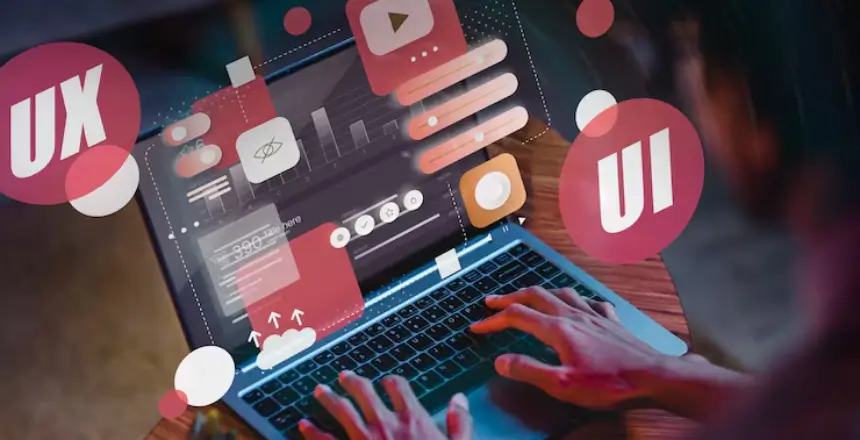Designing a WordPress website is great – as you’re want to show your brand or ideas to the world.
But…
Over excitement of website designing can be risky.
Here’s is what I mean:
According to G2, 64.2% of new WordPress users make common mistakes when designing a WordPress website including picking wrong theme, avoiding security, etc.
Making mistakes are okay – everyone does make errors.
The thing that matters is you should not repeating same mistakes again.
In today’s post, I’m going to share with you common WordPress website design mistakes when designing your first website.
Let’s get started:
1. Compromising on Security
Don’t overlook security—your website’s safety depends on it.
As a WordPress website designer, safeguarding your site’s integrity and sensitive data should be a top priority.
Here’s how to do it right:
- Set Strong Defenses: Create robust passwords and add an extra layer of protection with two-factor authentication.
- Keep Everything Updated: Regularly update WordPress core, themes, and plugins to patch vulnerabilities.
- Use Trusted Tools: Invest in reputable security plugins to bolster your website’s defenses.
- Regular Inspections: Conduct security audits frequently to identify and fix any potential weaknesses.
By taking these proactive measures, you’re not only ensuring your website’s security but also building trust with your visitors. Keep your website safe and sound — it’s worth the effort!
2. Choosing a Wrong WordPress Theme
Selecting a WordPress theme can be exciting yet overwhelming. Rushing or not caring about the look of your site can lead to quick decisions that might not be the best fit.
Strike a balance between immediate choices and endless scrolling.
Consider these points when selecting your theme:
- Conveys Your Message: Does the theme reflect the essence of your website’s message?
- Mobile Compatibility: Ensure the theme looks good and functions well on mobile devices.
- Trustworthy Source: Choose themes from reliable sources to avoid potential issues.
- Aligns with Your Business Goals: Is the theme in line with your business objectives and target audience?
While you can change themes anytime, frequent switches can confuse visitors and harm your branding efforts. Aim to find a theme that meets your essential criteria and stick with it to build a consistent brand image.
Remember, there’s no such thing as a perfect theme, but finding one that meets your needs is crucial. If you’re unsure about what your theme should include checkout GeneratePress or Astra – both are lightweight themes.
3. Overloading with Plugins
Plugins are a double-edged sword in the WordPress ecosystem. WordPress plugins are cool — as they promise solutions to every website to enhance its functionality with just a click. With over 50,000 plugins available, the options seem endless.
Here’s why you need to be careful…
…too many plugins can slow down your site’s speed and user experience.
Before adding a plugin, ask yourself:
Does it serve a specific purpose, like adding a contact form or boosting security?
Will it truly enhance your website’s functionality or SEO value?
If the answer is no, skip it. Be selective and prioritize quality over quantity.
Remember, you can always uninstall unnecessary plugins later if needed. Keep your plugin list lean and efficient for a smoother website experience.
4. Neglecting WordPress Updates
Regular updates are important for keeping your WordPress website safe and running smoothly.
Ignoring updates leaves your site vulnerable to security breaches and technical glitches that updates are designed to prevent.
By staying up to date with WordPress updates, you:
- Protect sensitive information from theft.
- Prevent website crashes and data loss.
Don’t forget to update your plugins and themes too.
In fact, outdated plugins are responsible for 92% of WordPress vulnerability reports. (Hostinger)
These updates not only add new features but also fix bugs and strengthen security.
Keep your website secure and functioning at its best by staying on top of updates.
5. Forget Mobile Responsiveness
In today’s digital world, mobile phones are everywhere. That’s why it’s super important to make sure your website looks great and works smoothly on all sorts of devices, big and small.
Here’s how to optimize mobile responsiveness for your WordPress site:
- Test Across Devices: Make sure your website looks good on phones, tablets, and computers. Use tools like Google’s Mobile-Friendly Test to check.
- Speed Up Load Times: Make your images and content load fast on mobile devices. This keeps visitors happy and engaged.
- Keep it Readable: Arrange your content so it’s easy to read on smaller screens. Think about what’s most important for mobile users.
- Use Responsive Design: Design your website to be flexible, so it adapts to different screen sizes automatically.
By following these tips, you’ll create a website that’s a joy to use on any device.
6. Ignoring SEO Best Practices
No matter how fantastic your content is, it won’t make an impact if no one sees it.
If you want more people to find your WordPress website, you’ve got to pay attention to search engine optimization (SEO).
Ignoring SEO best practices can leave your site lost in the vast online world.
Here’s how to get started with SEO:
- Keyword Research: Find out what words and phrases people are searching for in your niche, and use them strategically in your content.
- Build Backlinks: Get other reputable websites to link to yours. It boosts your credibility and helps you climb higher in search results.
- Optimize On-Page Elements: Fine-tune your URLs, meta descriptions, and title tags to make them more appealing to search engines and users.
For additional help, use SEO tools like the Yoast SEO plugin or RankMath — it’s like having an SEO expert right at your fingertips.
With these SEO practices in place, your WordPress website will have a better chance of reaching its full potential and attracting the audience it deserves.
7. Making Changes on Live Site
Thinking your changes will be flawless when they go live? Think again.
Whether it’s a new theme, plugin, or update, there’s always a chance something could go wrong, causing your site to go offline. This could mean lost traffic, income, or other valuable metrics.
Instead of taking that risk, try this:
- Create a Test Environment: Use a plugin to make a copy of your site where you can experiment without consequences.
- Experiment Freely: Test out changes in this staging environment before applying them to your live site.
By setting up a staging area, you can try out new ideas and fixes without worrying about breaking anything. Just search for “staging” in the plugin directory to get started.
Don’t leave your website’s fate to chance—test your changes before making them live.
Learn from Mistakes, Avoid Common Pitfalls
Remember: it’s easier to fix a mistake before it happens.
Whether you’re a WordPress beginner or a seasoned pro, you’re likely to encounter challenges along the way. But why learn the hard way when you can benefit from the experiences of others?
By being aware of common WordPress mistakes and pitfalls, you can build your website with greater confidence and success.
So, when you’re building a website, keep these lessons in mind. Learn from the missteps of others, and may your website thrive without unnecessary setbacks.









